Direct Inward Dialing: +1 408 916 9393
Effective management of Group Policy Objects (GPOs) is essential for enhancing security within an organization. Implementing best practices for GPO management ensures that policies are enforced consistently, minimizing vulnerabilities and enhancing overall security. By following these recommendations, you can achieve a more secure, compliant, and efficiently managed IT environment.
Here are the top 10 Group Policy settings for enhanced security:
To enhance security, it's important to prevent Windows from storing LAN Manager (LM) hashes of user passwords. The LM hash, an older hashing algorithm, is known to be weak and vulnerable to attacks, making it easier for hackers to exploit. By disabling the storage of LM hashes, you reduce the risk of password cracking and improve overall system security.
This process involves configuring system settings to ensure that Windows only stores the more secure Windows NT hashes. Taking this step helps safeguard user credentials and protects against potential unauthorized access. Follow the below steps to implement these restrictions.

Command prompts can execute commands that provide elevated access and bypass system restrictions. To protect system resources, it's advisable to disable the command prompt.
Once disabled, if someone attempts to open a command window, the system will display a message indicating that certain settings are preventing this action. Follow the below steps to implement these restrictions.
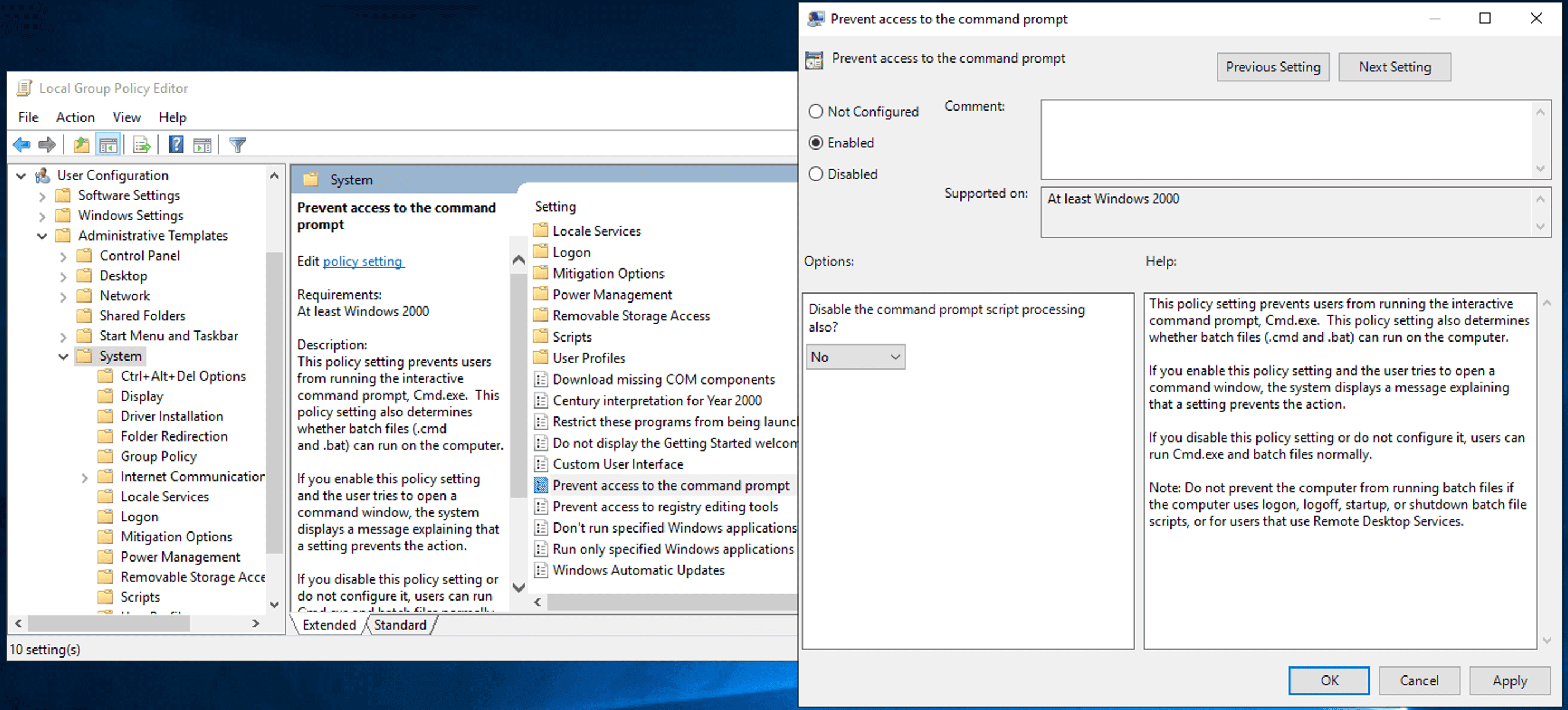
Allowing users to install software can lead to the installation of unwanted applications that may jeopardize your system's security. System administrators often need to perform regular maintenance and cleanup to address these issues.
To avoid potential risks, it is prudent to prevent software installations with a Group Policy. Follow the below steps to do so.
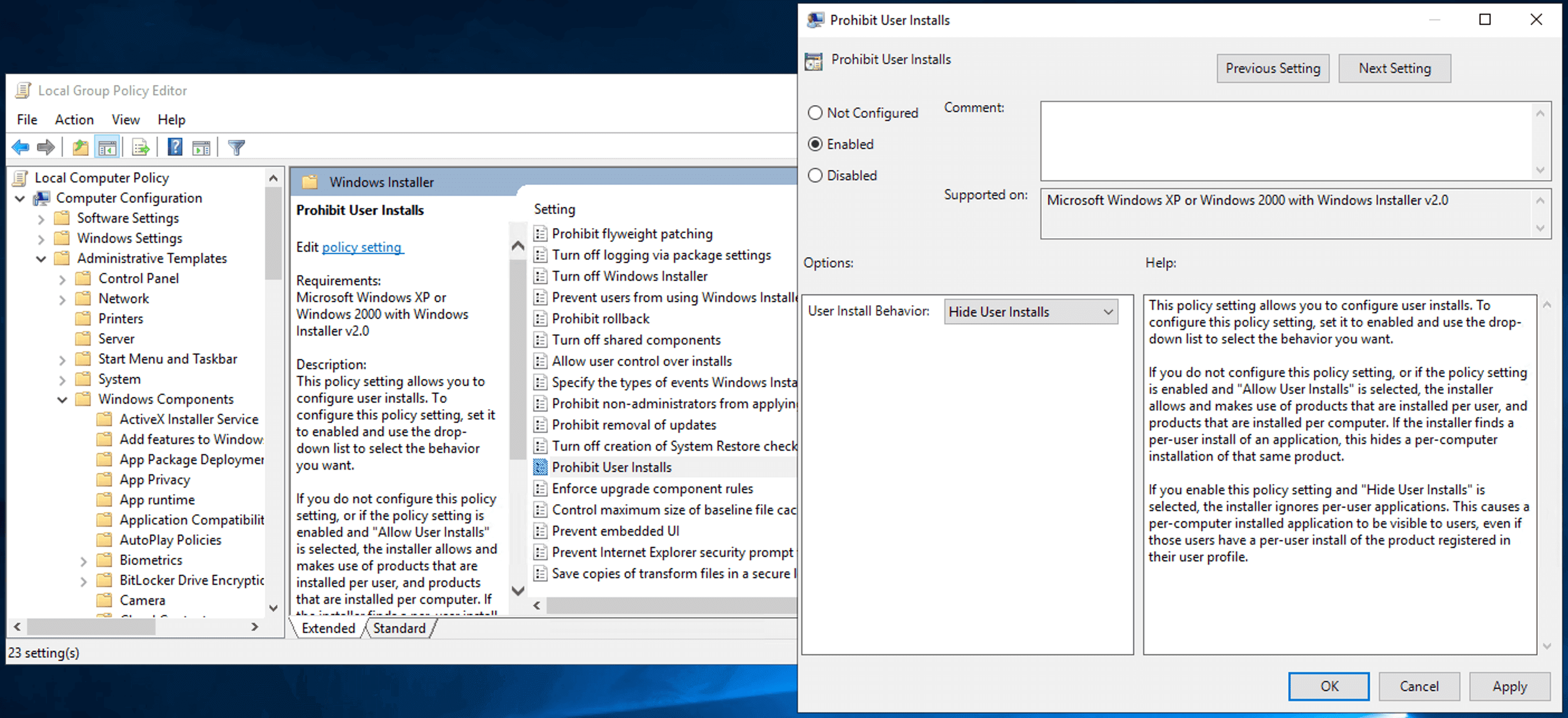
Restricting access to a computer's Control Panel enhances security within your business environment. Since the Control Panel provides comprehensive control over your computer's settings, limiting access helps safeguard data and other resources. Follow the below steps to implement these restrictions.
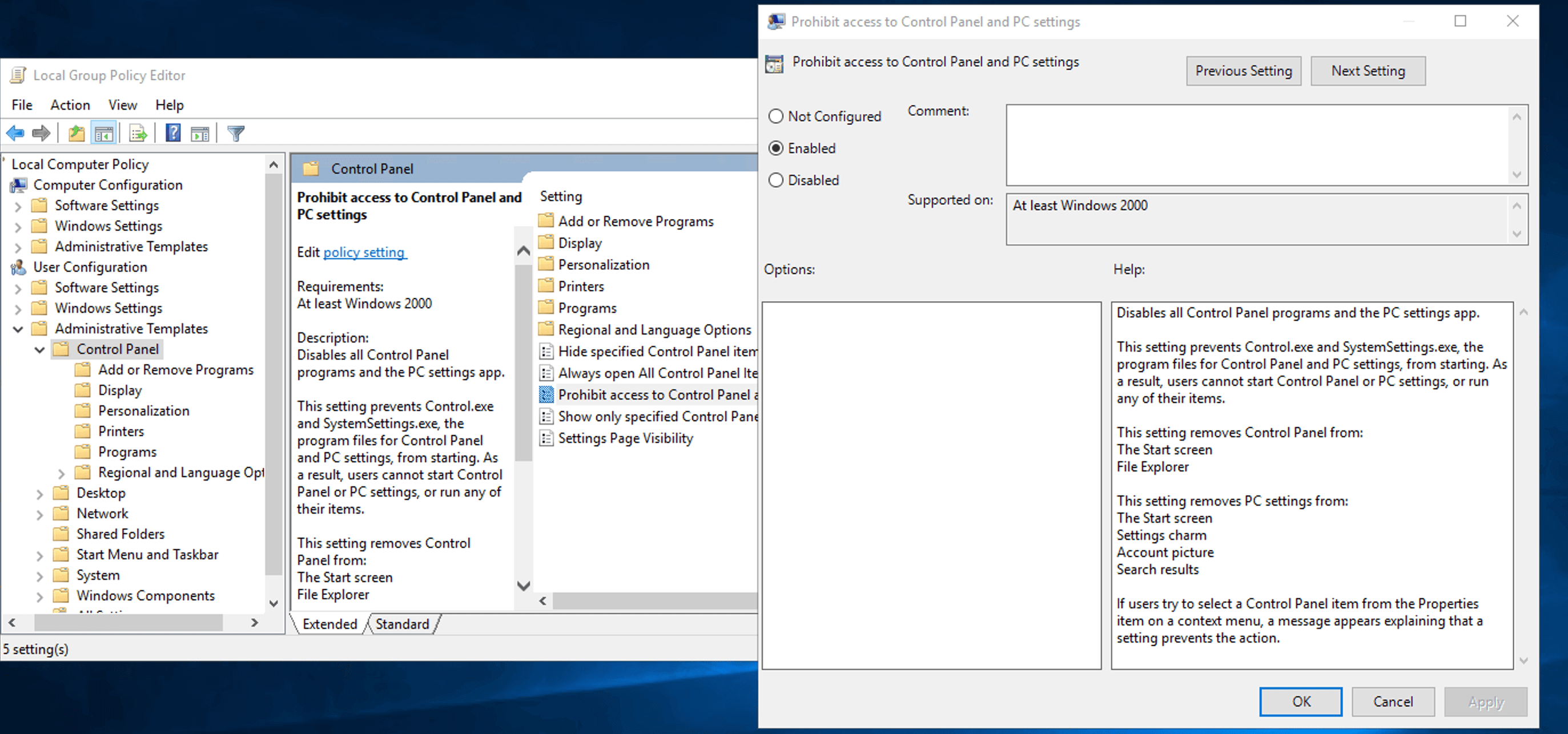
Removable media drives, including DVDs, CDs, and floppy drives, are particularly vulnerable to viruses and malware. If a user connects an infected drive to a network computer, it can potentially spread malicious software throughout the entire network.
To prevent these security risks and protect your systems, it's best to disable access for all such drives entirely. Follow the below steps to do so.

Forced system restarts are quite common, especially when Windows prompts users to restart after a security update. These automatic restarts can result in loss of unsaved work and reduced productivity. By disabling forced restarts, admins can ensure updates are applied in a controlled manner, allowing users to save their work and schedule restarts at more convenient times.
To prevent automatic restarts, you can disable this feature with a Group Policy. Follow the below steps to do so.
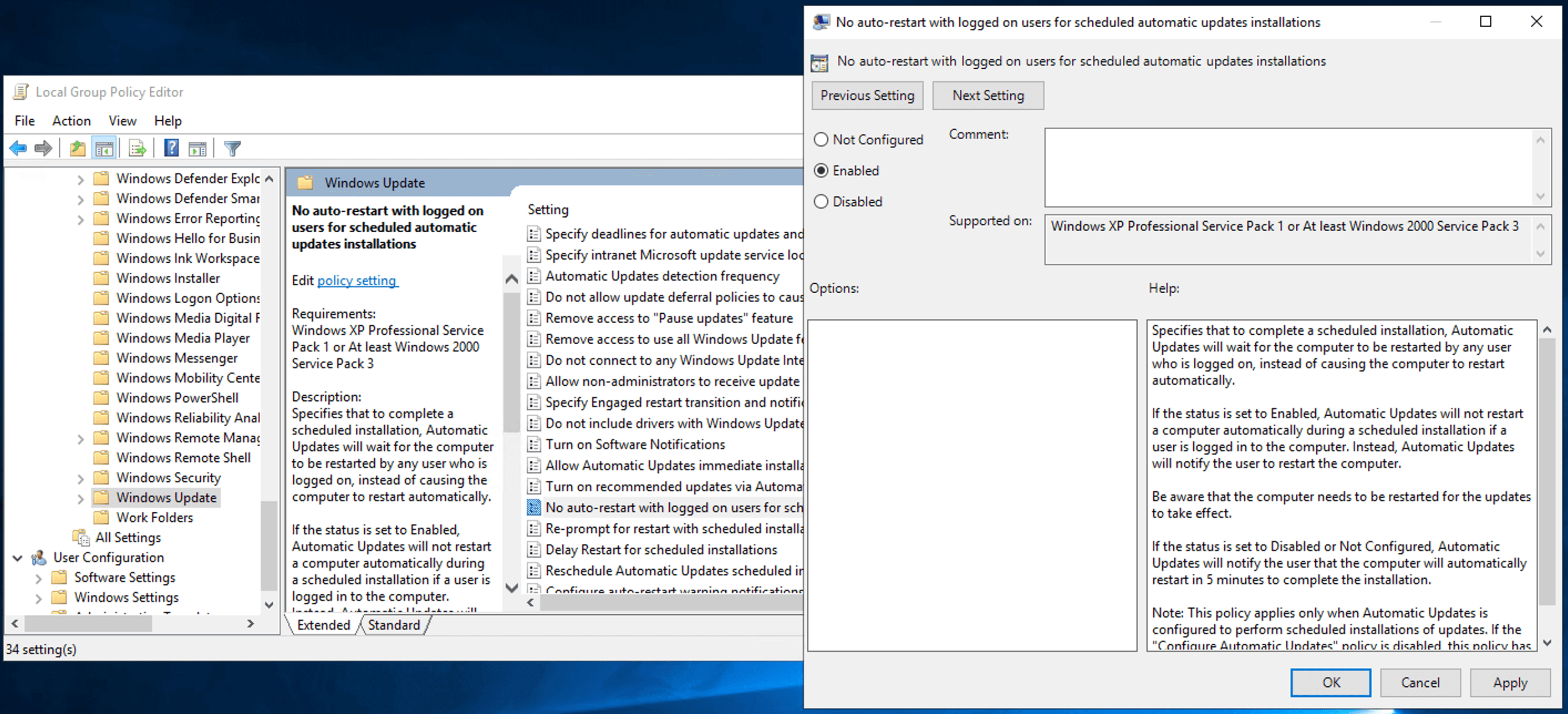
A guest account can provide access to sensitive data, as it allows entry into a Windows computer without requiring a password. Activating this account can lead to unauthorized misuse and potential abuse of your systems.
Fortunately, guest accounts are disabled by default. However, it?s important to verify this in your IT environment. If the account is enabled within your domain, disabling it will help prevent unauthorized access and safeguard your systems. Follow the below steps to do so.

If MFA cannot be enabled in your environment, it is crucial to keep the password age short to ensure frequent password changes. A longer password expiration period increases the risk of password theft by reducing how often users must update their passwords. Shorter expiration intervals are generally recommended for enhanced security.
By default, Windows sets the maximum password age to 42 days. Follow the below steps to set a lower age requirement.
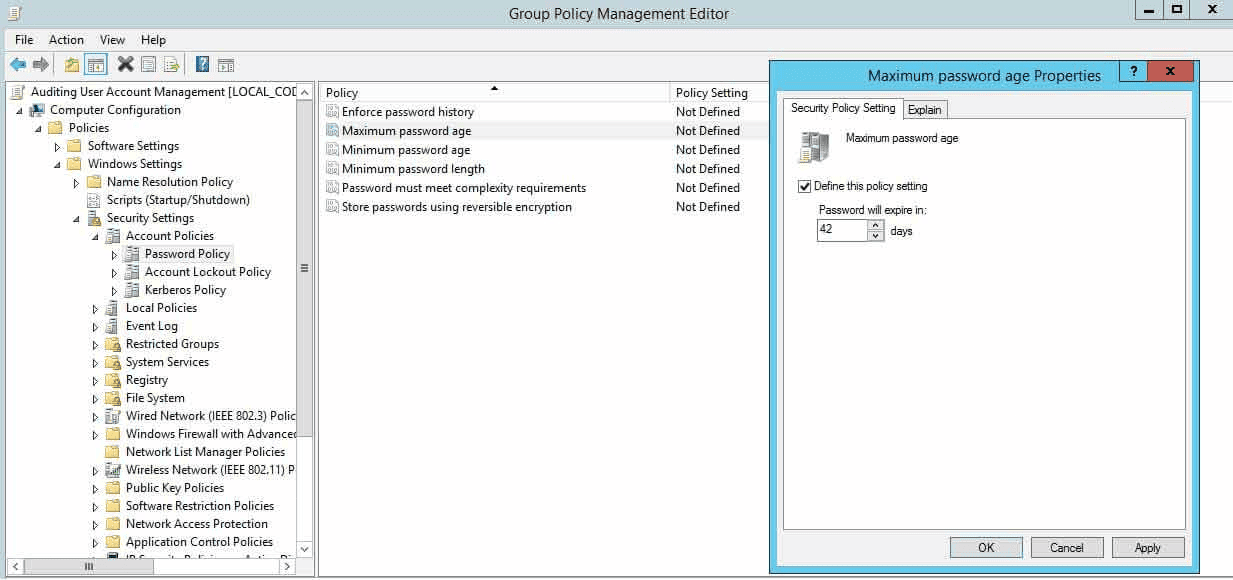
In AD, each security object, including users and groups, is given a unique Security Identifier (SID). By blocking anonymous SID enumeration, you make it more difficult for potential attackers to gather information about users and groups within your network.
By default, this setting is disabled to ensure that unauthorized users cannot access or enumerate SIDs without proper authentication. Ensuring that this setting is enabled is an important step in safeguarding your network and maintaining security. Follow the below steps to do so.

It is recommended to set passwords for elevated accounts to a minimum of 15 characters to ensure a higher level of security, while for regular accounts, a minimum of 12 characters should be used. Using shorter minimum lengths increases the risk of password-related security breaches. The default minimum password length setting is zero characters, which means you will need to specify a higher number to meet these security requirements.
Setting appropriate minimum lengths helps safeguard your accounts from unauthorized access and potential security threats. Follow the below steps to do so.
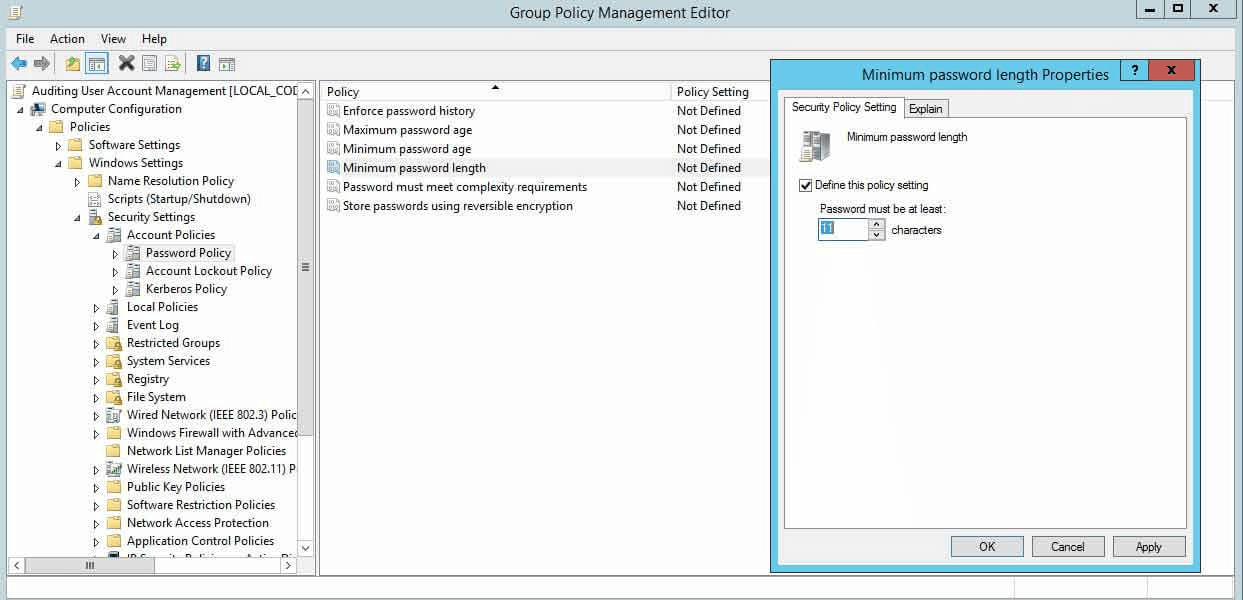
ADManager Plus offers robust solutions for creating and managing Group Policies, ensuring that your AD environment remains secure and efficient. It simplifies and controls this process by providing comprehensive tools and features designed to monitor, manage, and secure Group Policy changes. It allows administrators to set granular permissions for users and groups, controlling who can view or modify GPOs, thus reducing the risk of unauthorized changes and maintaining policy integrity.
Additionally, ADManager Plus offers comprehensive reporting capabilities, enabling administrators to generate predefined reports that facilitate effective monitoring and review of policy modifications. It also enhances compliance by enforcing policies to ensure that only authorized changes are made, helping to meet both internal and external regulatory requirements.